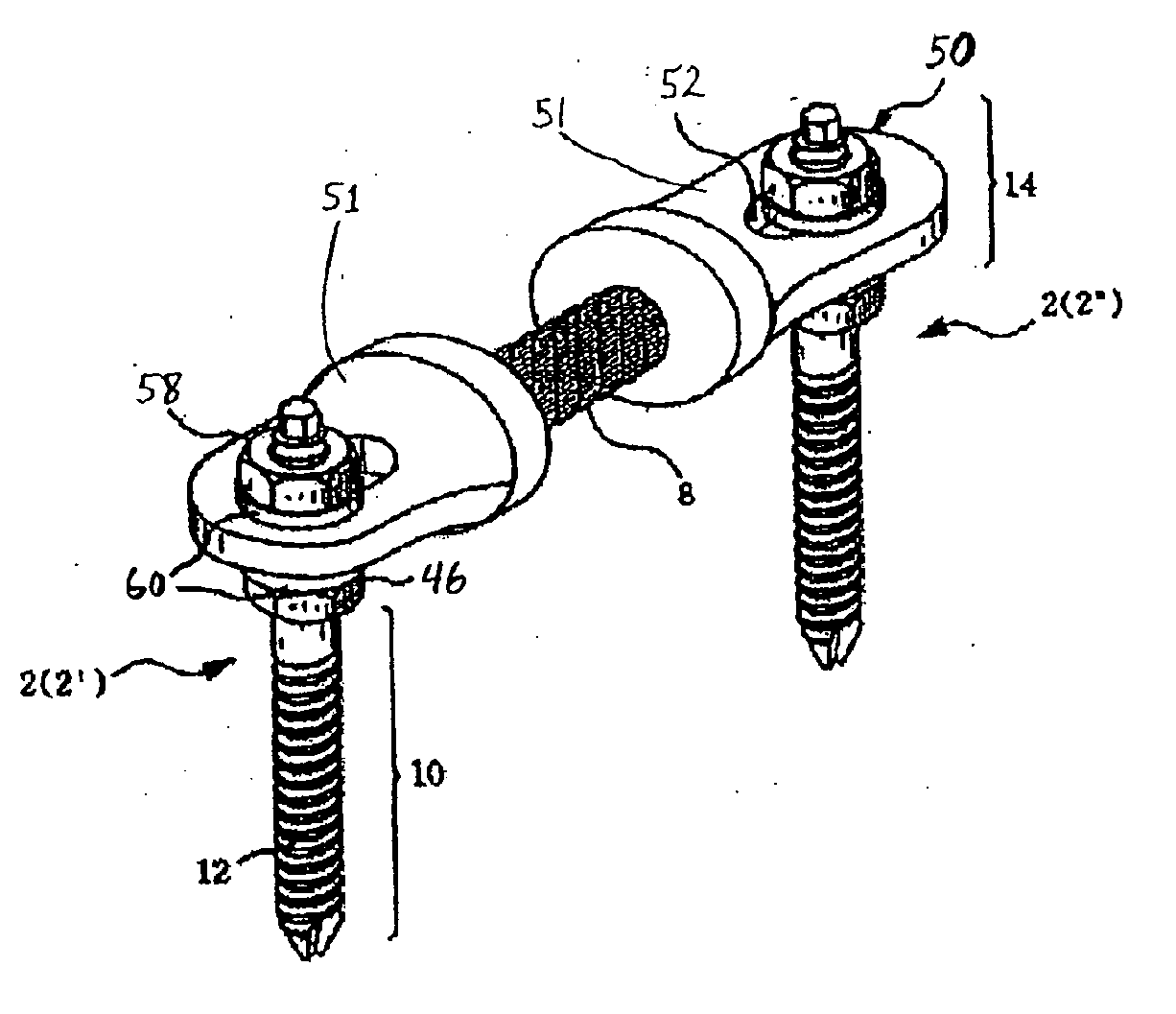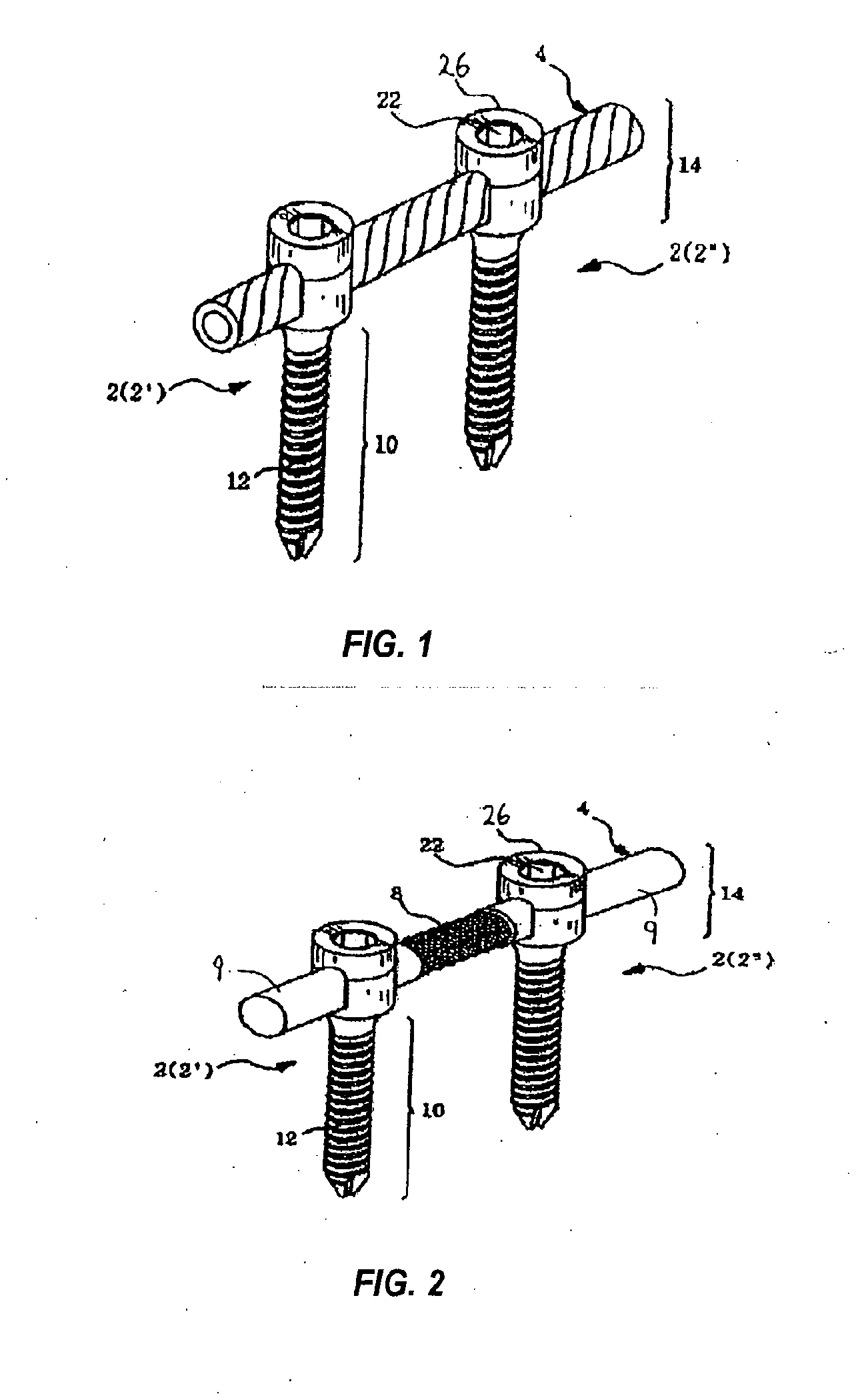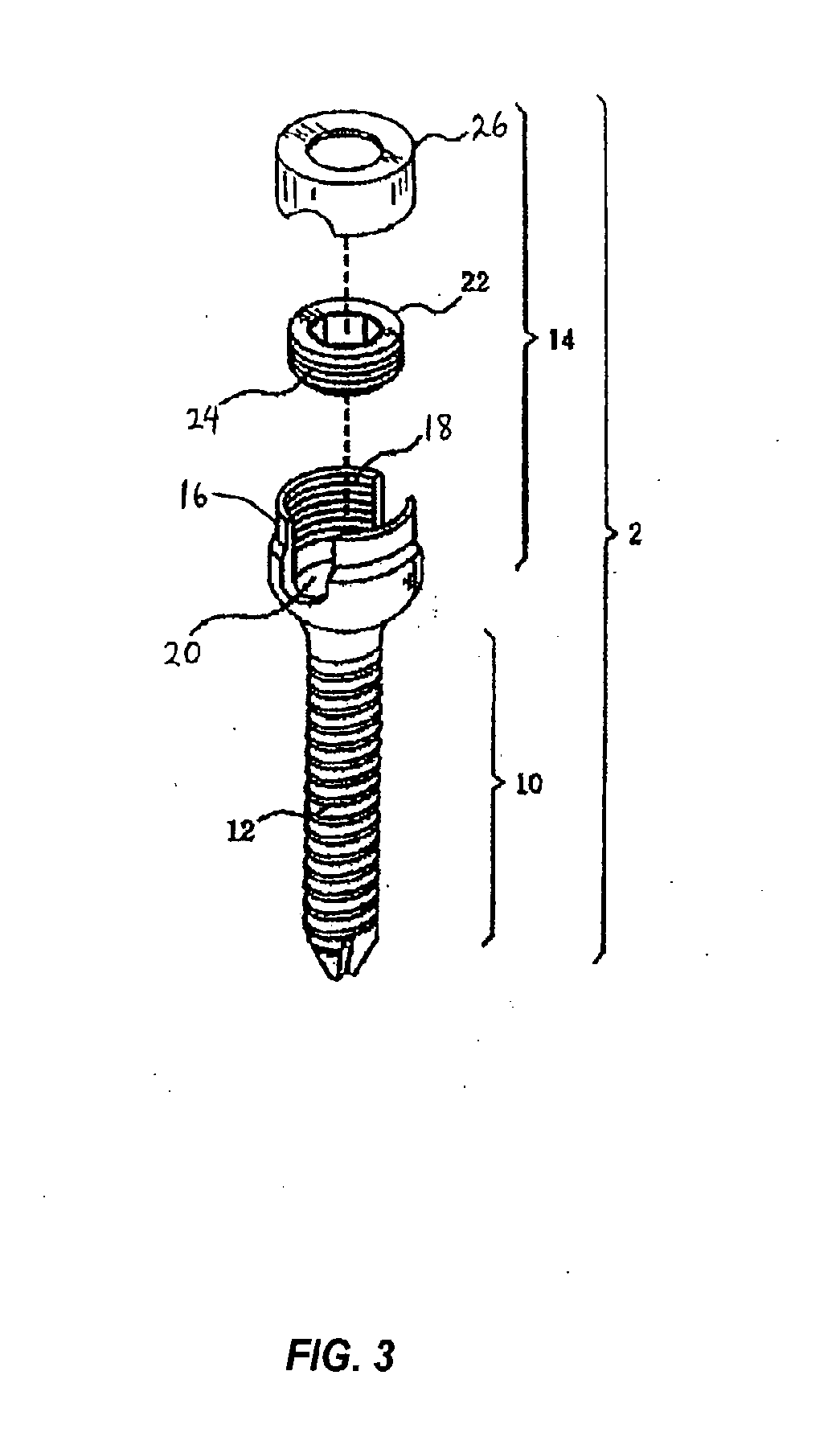Spinal Stabilization Device
a spinal column and stabilization device technology, applied in the field of spinal column stabilization devices, can solve the problems of unfavorable stability, unfavorable stability, unfavorable stability, etc., and achieve the desired level of flexibility and stability, improve construction and design, and reduce operation time
- Summary
- Abstract
- Description
- Claims
- Application Information
AI Technical Summary
Benefits of technology
Problems solved by technology
Method used
Image
Examples
Embodiment Construction
[0106]The invention is described in detail below with reference to the figures wherein like elements are referenced with like numerals throughout.
[0107]FIG. 1 depicts a spinal fixation device in accordance with one embodiment of the present invention. The spinal fixation device includes two securing members 2 (designated as 2′ and 2″), and a flexible fixation rod 4 configured to be received and secured within a coupling assembly 14, as described in further detail below with respect to FIG. 3. Each securing member 2 includes a threaded screw-type shaft 10 configured to be inserted and screwed into a patient's spinal pedicle. As shown in FIG. 1, the screw-type shaft 10 includes an external spiral screw thread 12 formed over the length of the shaft 10 and a conical tip at the end of the shaft 10 configured to be inserted into the patient's spinal column at a designated location. Other known forms of the securing member 2 may be used in connection with the present invention provided the...
PUM
 Login to View More
Login to View More Abstract
Description
Claims
Application Information
 Login to View More
Login to View More - R&D
- Intellectual Property
- Life Sciences
- Materials
- Tech Scout
- Unparalleled Data Quality
- Higher Quality Content
- 60% Fewer Hallucinations
Browse by: Latest US Patents, China's latest patents, Technical Efficacy Thesaurus, Application Domain, Technology Topic, Popular Technical Reports.
© 2025 PatSnap. All rights reserved.Legal|Privacy policy|Modern Slavery Act Transparency Statement|Sitemap|About US| Contact US: help@patsnap.com



